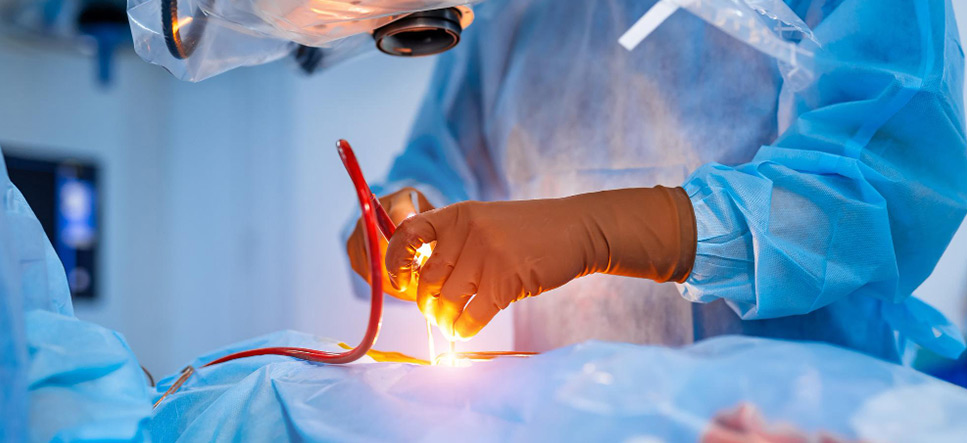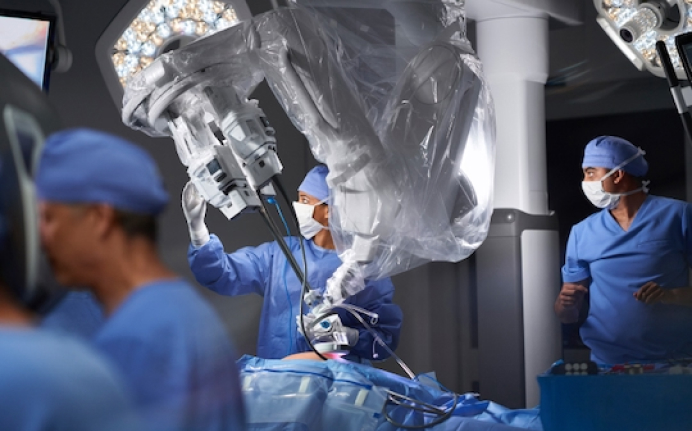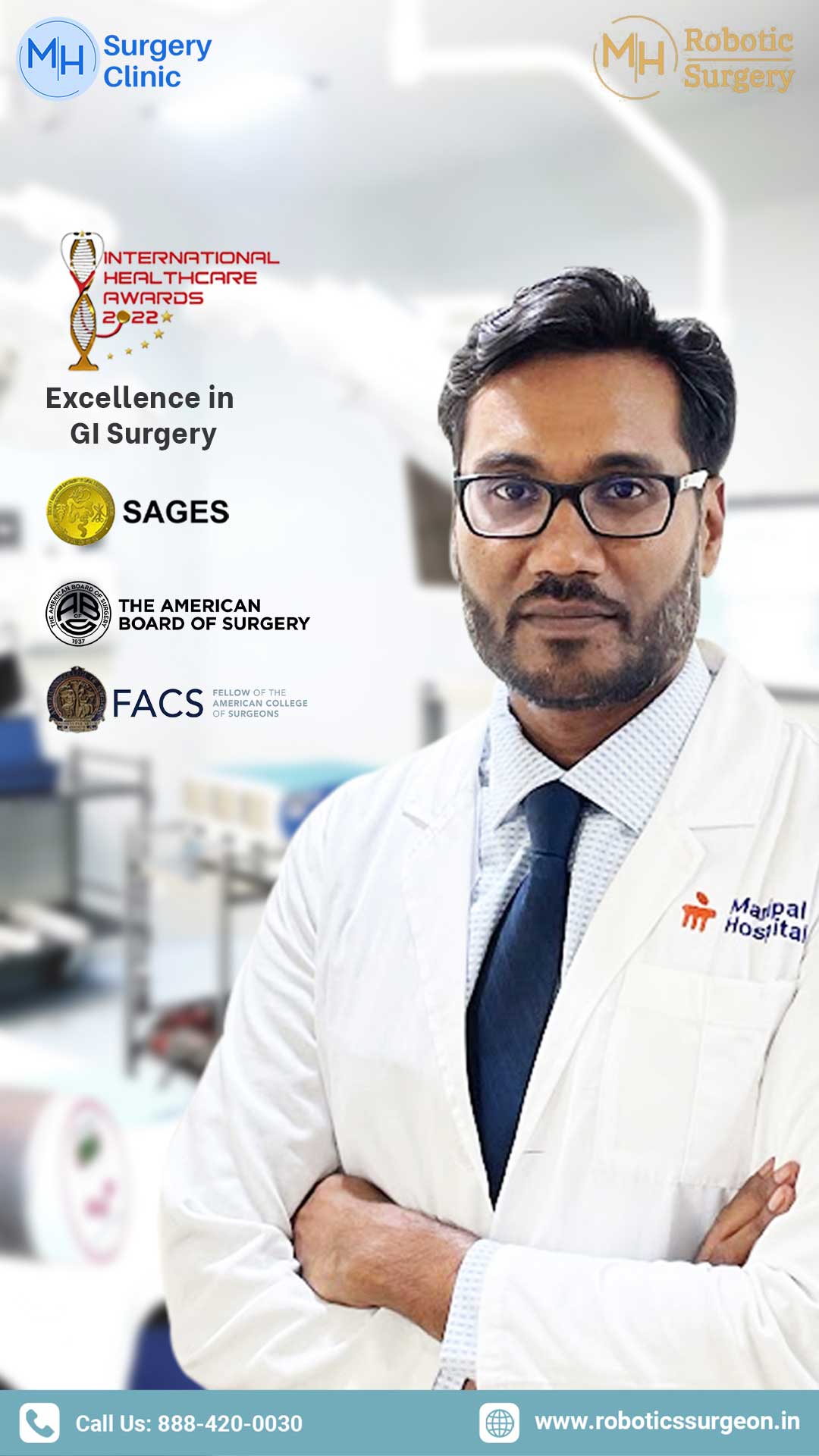
Robotic Pancreas Surgery
We believe minimally invasive care is life-enhancing care
About Robotic Pancreas Surgery

Few developments in contemporary medicine have as much promise as robotic pancreatic surgery. This innovative method is a monument to the unwavering quest for greater results and better patient experiences, not just a technical marvel. Let’s take a closer look at the complexities of robotic surgery, exploring the Whipple resection method and how it can be used to treat pancreatic stones.
Robotic Assistance In Whipple Resection
One of the mainstays of pancreatic surgery, the Whipple resection, has historically been linked to considerable surgical invasiveness and extended recovery times. However, since the development of robotic technology, the story has drastically changed. The Whipple resection has been transformed by robotic assistance, which provides surgeons with improved precision and vision capabilities. Better resection accuracy, less tissue damage to the surrounding areas, and improved patient outcomes following surgery are the results of this.
The key to the success of robotic pancreatic surgery is its unmatched precision in navigating the intricate architecture of the organ. The best pancreatic doctor in India operates with the help of robotic arms, which imitate human movements very well, enabling deft moves in confined locations. This degree of accuracy is especially important for treating pancreatic stones, which, if ignored, can result in excruciating pain, blockage, and consequences.
Robotic Precision In Pancreatic Stone Treatment
Hardened deposits that occur inside the pancreatic ducts are referred to as pancreatic calculi or pancreatic stones. These stones can cause bile and digestive enzyme flow obstructions, which can result in pancreatic ductal hypertension, infection, and inflammation. Pancreatic stone treatment used to frequently require major surgical procedures and extended hospital stays. But the scene has changed with robotic pancreatic surgery.
Beyond its technical capabilities, patient-centered care is embodied by robotic pancreatic surgery. From preoperative planning to postoperative rehabilitation, every step of the surgical process is painstakingly customized to each patient’s specific requirements and preferences. To build trust and confidence between patients and their surgical teams, robotic surgery experiences require a high degree of empathy, compassion, and communication.
Embracing Robotic Pancreas Surgery
Robotic pancreatic surgery is a revolutionary development in the world of surgical innovation. Surgeons can reinvent the standard of treatment for patients with pancreatic disorders, improve quality of life, and achieve improved outcomes by utilizing robotics. So, say goodbye to pancreatic problems and get in touch with Dr. Manjunath Haridas today for the best treatment.
Read Also: Robotic Gallbladder Surgery, Ventral Hernia
We are making robotic surgery a new standard of care

Patient-Centered Care
Prioritize patient safety and well-being in the development and implementation of robotic care. Involve patients in the decision-making process, provide clear information, and address their concerns and preferences. Conduct rigorous clinical trials and studies.
Interdisciplinary Teams
A multidisciplinary team of experts, including clinicians, roboticists, engineers, data scientists, and healthcare administrators, to collaborate on this initiative. Encourage open communication and collaboration which leads to better patient outcomes.
Cost-Effectiveness
Assess the cost-effectiveness of robotic care and explore ways to make it more accessible to a broader range of patients. Collaborate with healthcare payers and providers to ensure reimbursement for robotic procedures.
Education and Training
Develop comprehensive training programs for healthcare providers, ensuring that they have the necessary skills and knowledge to use robotic systems effectively. Offer ongoing education and certification and update on the latest advancements.What to expect with robotic-assisted surgery
If you or someone you know is scheduled for robotic-assisted surgery, it’s natural to have questions about what to expect before, during, and after the procedure. Robotic surgery is a transformative medical technology that has revolutionized the field of surgery by enhancing the capabilities of surgeons and improving patient outcomes. Here’s an overview of what you can typically anticipate when undergoing robotic-assisted surgery:

Before the Surgery
Consultation: You will have one or more consultations with your surgeon to
discuss your medical condition, the surgical procedure, and whether
robotic-assisted surgery is the right option for you and any alternatives if there are any.
Preoperative Evaluation: Before the surgery, you may need to undergo several tests and evaluations to ensure you are a suitable candidate. This may include blood tests, imaging scans, and a review of your medical history.
Preparation: Your surgeon and healthcare team will provide specific instructions about how to prepare for the surgery. This may involve fasting for a certain period, discontinuing certain medications, and taking a shower with a special soap to reduce the risk of infection.
During the Surgery
Anesthesia: You will be given anesthesia to keep you pain-free and asleep during
the surgery. The type of anesthesia (general or local) will depend on the specific procedure and your medical condition.
Operating Room Setup: In the operating room, the surgical team will position you on the operating table and prepare the surgical area. The robotic system will be set up, and your surgeon will be seated at the console.
Robotic Assistance: Your surgeon will control the robotic arms and instruments from the console. The robotic system provides enhanced precision and dexterity during the surgery.
After the Surgery
Recovery Room: After the surgery, you will be taken to a recovery area where
you'll gradually wake up from anesthesia. A nurse will monitor your condition
closely.
Pain Management: You may experience some pain or discomfort after surgery. Your healthcare team will provide pain management medications as needed.
Hospital Stay: The length of your hospital stay will vary depending on the type of surgery and your individual recovery progress. Many robotic-assisted surgeries result in shorter hospital stays compared to traditional open surgery.
Why choose Robotic Surgery

Enhanced Vision
The robotic system delivers 3D high-definition views, giving your surgeon a crystal clear view of the surgical area that is magnified 10 times to what the human eye sees. This helps the surgeon perform surgery with greater accuracy and smoothness.

Precise movements
Robotic systems provide high precision and delicate motor control, lowering the possibility of human error. Surgeons utilize tiny devices that mimic human hands. Built-in tremor-filtration technology helps in smooth and precise movements.

Minimal Blood loss
Robotic surgery is minimally invasive, meaning it involves small incisions wiith minimal tissue damage resulting in less pain, and reduced scarring. Less blood means results in faster healing, less time in hospital and return to life sooner than expected.
FAQs
A pancreatic cyst can range in severity. In order to properly treat pancreatic cysts, Dr. Manjunath Haridas evaluates each case on an individual basis and offers professional advice and specialized treatment regimens.
It is best to stay away from hot and high-fat foods if you have pancreatic stones or cysts. Choose a diet low in alcohol and processed foods. A healthcare provider should be consulted in order to develop a customized diet plan that will help control symptoms and promote pancreatic health, according to Dr. Manjunath Haridas.
It is important to identify signs like fever or abdominal pain to diagnose a pancreatic fistula. In order to ensure timely intervention in the event that a pancreatic fistula is identified, Dr, Manjunath Haridas uses sophisticated diagnostic equipment for precise assessments. If you encounter these symptoms, speak with a member of our knowledgeable staff for an accurate assessment and tailored treatment.
The recovery period of a pancreatic fistula varies depending on the specific circumstances. Dr. Manjunath Haridas offers individualized treatment and keeps a careful eye on patients to speed up their recuperation. Speak with our experienced staff for precise evaluations and a customized treatment strategy for pancreatic fistula healing.
Robotic whipple surgery is a dangerous yet frequently required treatment for diseases like pancreatic cancer. Specializing in this intricate procedure, Dr. Manjunath Haridas uses cutting-edge methods to reduce risks and improve results. Throughout the Whipple resection surgery, our skilled staff prioritizes the well-being of our patients by providing thorough care.
Following Whipple surgery, alterations in digestion may be among the long-term problems. Dr. Manjunath Haridas prioritizes thorough postoperative care, addressing these issues to advance the general health of patients. Our staff ensures a customized strategy to reduce any long-term issues while keeping an eye on and supporting patients throughout their recuperation.
Pancreatic stone therapy is effectively provided by Dr. Manjunath Haridas, with options ranging from pills to minimally invasive operations. Our skilled team guarantees individualized treatment, reducing discomfort and enhancing pancreatic health. In order to treat pancreatic stones, we employ cutting-edge methods, customizing the regimen to meet the specific requirements of each patient for the best possible results.

